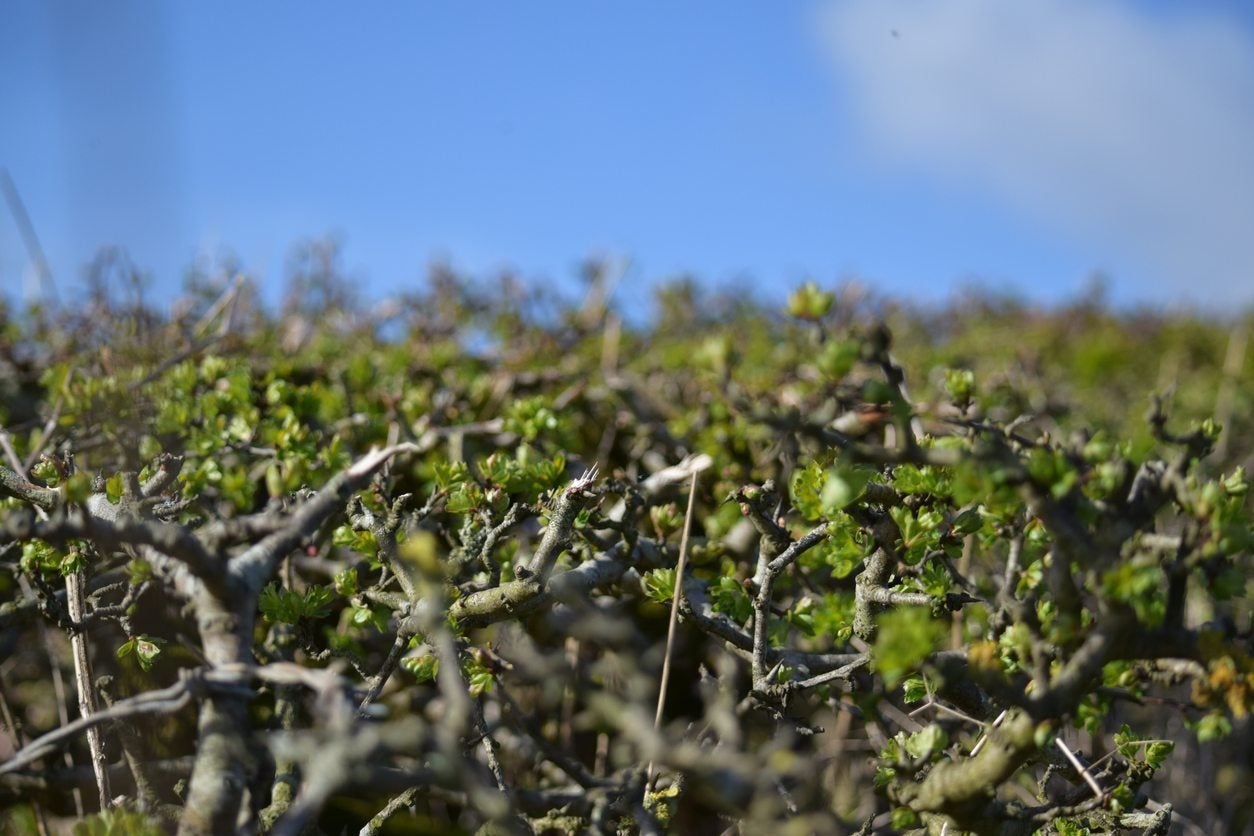Hawthorn Hedge Transplanting – How To Transplant A Hawthorn Hedge


Hawthorn shrubs are short and gnarly. These native North American trees make excellent defensive hedges with their dense growth pattern and thorny branches. If you want to know how to transplant a hawthorn shrub or when to move a hawthorn hedge, read on. You’ll find lots of good tips for transplanting hawthorn hedges.
Transplanting Hawthorn Hedges
Hawthorns (Crataegus monogyna) are often used for hedges. A dense hawthorn hedge offers great protection for small wildlife and birds and also does a good job at keeping out intruders. Hawthorns produce flowers in early summer, followed by showy berries. These stay on the shrubs into winter, providing birds with food during the cold months. Although the shrubs are happy campers once they are in the soil, the “thorn” part of hawthorn becomes important if you are thinking of hawthorn hedge transplanting or trimming hawthorns for that matter.
When to Move a Hawthorn Hedge
The first thing to figure out is when to transplant your hedge. Some plants survive a move best if transplanted in fall. Others are happier being moved in spring. If you are wondering when to move a hawthorn hedge, do it in the beginning of the growing season. Therefore, in most areas, you’ll do best transplanting hawthorn hedges in spring.
How to Transplant a Hawthorn Shrub
Healthy shrubs have a better chance of surviving a move, so build up your plants before you start transplanting hawthorn hedges. Start this procedure the summer before the move by fertilizing appropriately, providing sufficient irrigation, and pruning out dead wood. The next step in hawthorn hedge transplanting is to root prune the shrubs the autumn before the move. This encourages the shrubs to grow more compact root systems that can move with them to the new location. The way to do this is to draw a circle around each shrub wide enough to include the root ball. Then dig straight down along the circle with a sharp spade, cutting off longer roots as you go. Come spring, pick your new site and prepare the planting holes for the hedge plants. Soak the soil around the hawthorns the day before moving. Reopen the circle around each plant and dig down until your shovel is under the root ball. You’ll want to tie in the branches loosely. This helps prevent getting your eyes raked by thorns. When this is done, lift the shrub’s root ball and place it on a tarp. Keep the roots covered and get it replanted as quickly as possible. To replant the hedge, place each shrub in the hole you dug for it, spreading out the roots. Plant each to the line of the soil mark on the stem. Firm the soil around each hawthorn shrub carefully to eliminate air pockets. Irrigate the newly transplanted hawthorns immediately after planting. Keep watering frequently during their first year in the new location.
Gardening tips, videos, info and more delivered right to your inbox!
Sign up for the Gardening Know How newsletter today and receive a free copy of our e-book "How to Grow Delicious Tomatoes".

Teo Spengler is a master gardener and a docent at the San Francisco Botanical Garden, where she hosts public tours. She has studied horticulture and written about nature, trees, plants, and gardening for more than two decades. Her extended family includes some 30 houseplants and hundreds of outdoor plants, including 250 trees, which are her main passion. Spengler currently splits her life between San Francisco and the French Basque Country, though she was raised in Alaska, giving her experience of gardening in a range of climates.
-
 Looking For Plants To Give You The Soft And Fuzzies? Try These 5 Fuzzy Leaf Plant Options
Looking For Plants To Give You The Soft And Fuzzies? Try These 5 Fuzzy Leaf Plant OptionsLovers of texture, drama, silver foliage and tactile plants will adore these special sensory garden additions. These fuzzy leaf plant options will leave you all aglow
By Susan Albert
-
 Get Ready For A Summer Of Hummers! Grow These Full Sun Hummingbird Plants and Flowers
Get Ready For A Summer Of Hummers! Grow These Full Sun Hummingbird Plants and FlowersIf you’re lucky enough to enjoy a sunny backyard, make sure you are maxing out on your pollinator opportunities and grow these full sun hummingbird plants and flowers
By Tonya Barnett